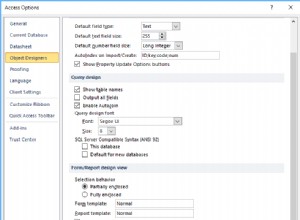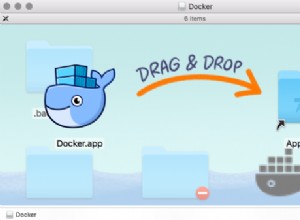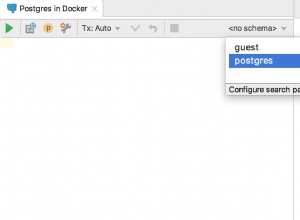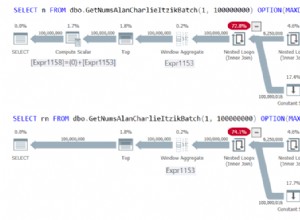Using filesort no es necesariamente algo malo. El nombre es un poco engañoso. Aunque contiene "archivo", no significa que los datos estén escritos en cualquier parte del disco duro. Todavía se procesa en la memoria.
Del manual :
Entiendes por qué sucede esto en tu consulta, ¿verdad? Usar este tipo de subconsultas es de mal estilo ya que es un dependiente subconsulta Para cada fila en su app table se ejecuta la subconsulta. Muy mal. Vuelva a escribir la consulta con join .
select app.id,
gp.dateup
from app
join gamesplatform_pricehistory gp on gp.id_app = app.id
where app.id > 0
and gp.country = 1
and gp.dateup = (SELECT MAX(dateup) FROM gamesplatform_pricehistory smgp WHERE smgp.id_app = gp.id_app AND smgp.country = 1)
;
Esto todavía usa una subconsulta dependiente, pero explain se ve mucho mejor:
| id | select_type | table | type | possible_keys | key | key_len | ref | rows | Extra |
|----|--------------------|-------|-------|---------------|---------|---------|----------------------------|------|--------------------------|
| 1 | PRIMARY | app | index | PRIMARY | PRIMARY | 4 | (null) | 2 | Using where; Using index |
| 1 | PRIMARY | gp | ref | id_app | id_app | 5 | db_2_034bc.app.id,const | 1 | Using where; Using index |
| 2 | DEPENDENT SUBQUERY | smgp | ref | id_app | id_app | 5 | db_2_034bc.gp.id_app,const | 1 | Using index |
Otra forma de reescribirlo sería esta:
select app.id,
gp.dateup
from app
LEFT join
(SELECT id_app, MAX(dateup) AS dateup
FROM gamesplatform_pricehistory
WHERE country = 1
GROUP BY id_app
)gp on gp.id_app = app.id
where app.id > 0
;
La explicación se ve aún mejor:
| id | select_type | table | type | possible_keys | key | key_len | ref | rows | Extra |
|----|-------------|----------------------------|-------|---------------|---------|---------|--------|------|--------------------------|
| 1 | PRIMARY | app | index | PRIMARY | PRIMARY | 4 | (null) | 2 | Using where; Using index |
| 1 | PRIMARY | <derived2> | ALL | (null) | (null) | (null) | (null) | 2 | |
| 2 | DERIVED | gamesplatform_pricehistory | index | (null) | id_app | 13 | (null) | 2 | Using where; Using index |
Y aquí hay una versión en la que no tiene ninguna subconsulta dependiente:
select app.id,
gp.dateup
from app
left join gamesplatform_pricehistory gp on gp.id_app = app.id and country = 1
left join gamesplatform_pricehistory gp2 on gp.id_app = app.id and country = 1 and gp.dateup < gp2.dateup
where app.id > 0
and gp2.dateup is null
;
Funciona así:cuando gp.dateup está al máximo, no hay gp2.dateup .




